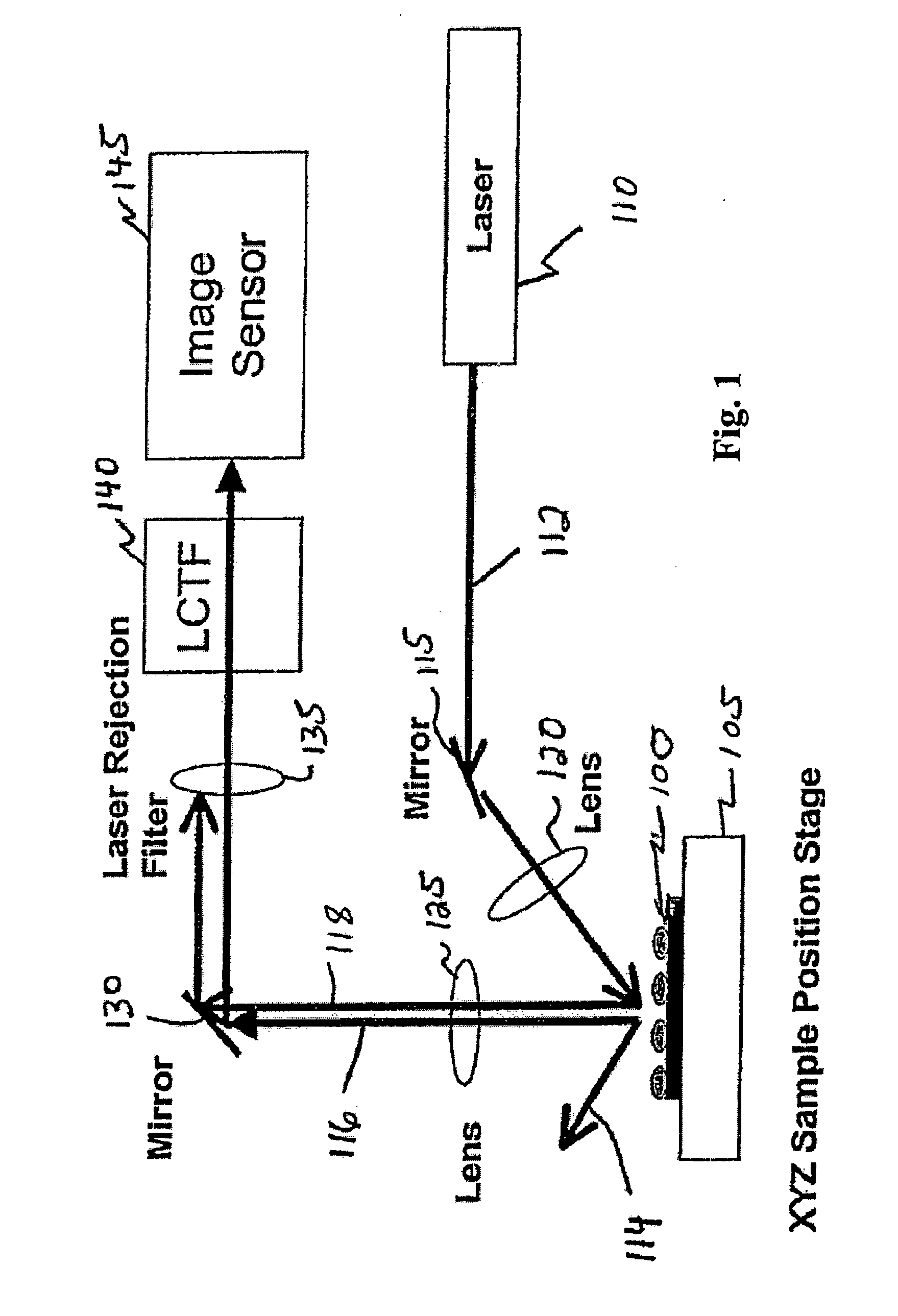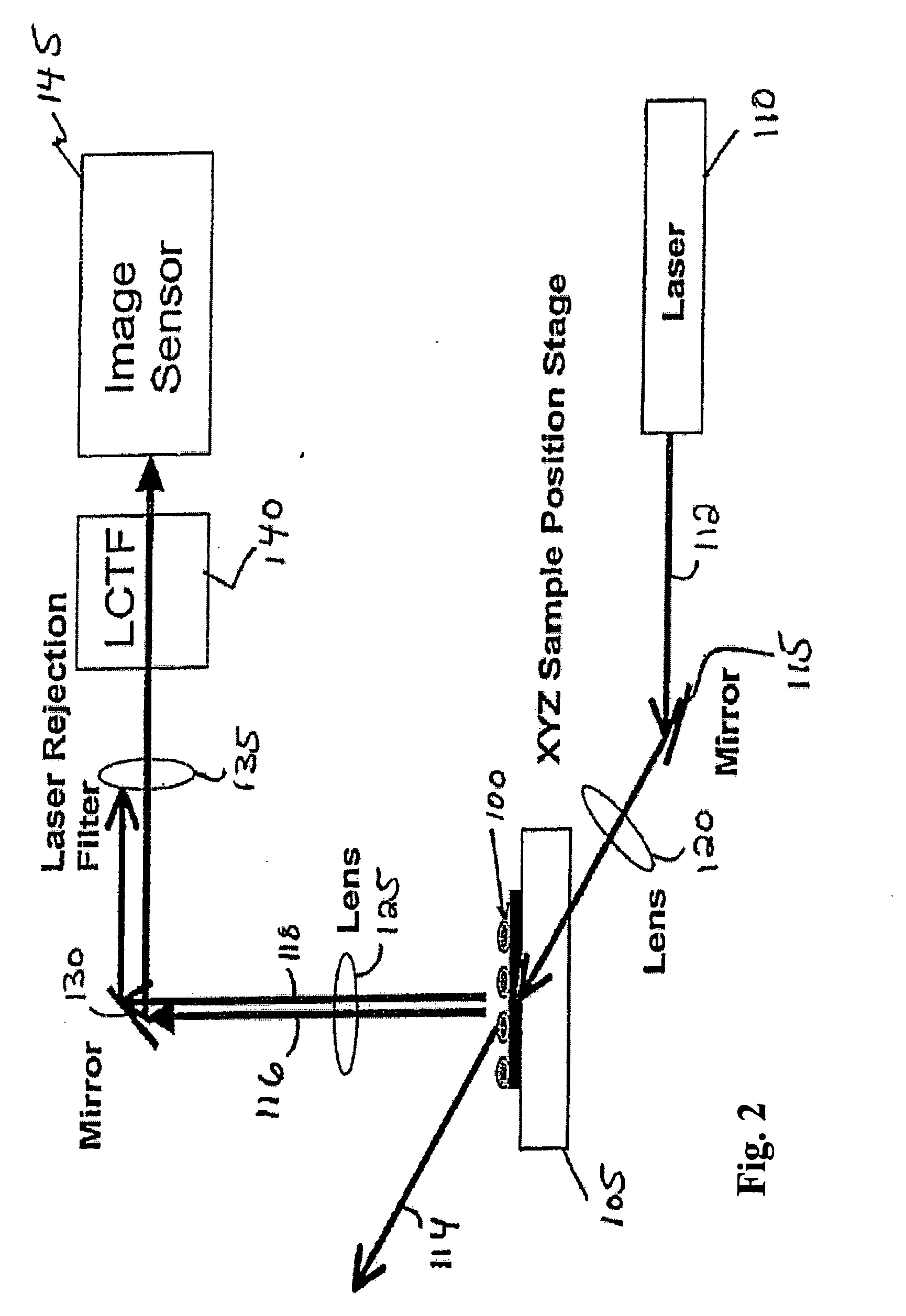Dynamic imaging of biological cells and other subjects
a biological cell and dynamic imaging technology, applied in the field oframan spectroscopy and microscopic imaging of biological cells, can solve the problems of limited in its utility to the particular conditions, difficult to understand the effects of a drug on an individual cell or small group of cells on a biochemically relevant scale, and the inability to apply univariate analysis broadly
- Summary
- Abstract
- Description
- Claims
- Application Information
AI Technical Summary
Benefits of technology
Problems solved by technology
Method used
Image
Examples
example
[0082] The invention is now described with reference to the following Example. This Example is provided for the purpose of illustration only, and the invention is not limited to this Example, but rather encompasses all variations which are evident as a result of the teaching provided herein.
[0083] Raman chemical imaging of a Raman-active compound in a breast cancer cell.
[0084] A Raman-active compound was contacted with a breast cancer cell. Subsequent Raman chemical imaging of the cell was performed. Raman spectra obtained from the cell prior to and after contacting it with the compound indicated significant differences in Raman spectral features at about 900 cm−1 and at about 2250 cm−1. Raman chemical imaging of the cell after contacting it with the compound demonstrated the location of the compound exhibiting the 2250 cm−1 feature in the cell cytoplasm.
PUM
| Property | Measurement | Unit |
|---|---|---|
| Raman shift | aaaaa | aaaaa |
| Raman shift | aaaaa | aaaaa |
| time | aaaaa | aaaaa |
Abstract
Description
Claims
Application Information
 Login to View More
Login to View More - R&D
- Intellectual Property
- Life Sciences
- Materials
- Tech Scout
- Unparalleled Data Quality
- Higher Quality Content
- 60% Fewer Hallucinations
Browse by: Latest US Patents, China's latest patents, Technical Efficacy Thesaurus, Application Domain, Technology Topic, Popular Technical Reports.
© 2025 PatSnap. All rights reserved.Legal|Privacy policy|Modern Slavery Act Transparency Statement|Sitemap|About US| Contact US: help@patsnap.com



